Business Research > QUESTIONS & ANSWERS > MNG3701- Exam Pack - questions and Solutions 2016-1-478. (All)
MNG3701- Exam Pack - questions and Solutions 2016-1-478.
Document Content and Description Below
STRATEGIC PLANNING: EXAM REVISION 2016 Learning unit 1 Introduction to strategic management Define the concept of strategy and briefly explain its relationship to strategic management. TB p9 /SGp4... Strategy: - Its generally seen as the result or outcome of fundamentally important pre-emptive, innovative management decisions about an organisation‘s strategic direction and strategic action plans to attain a sustainable competitive advantage and achieve its long-term objectives in rapidly changing and competitive external business - is the direction provided by the actions and decisions of strategists in pursuit of organisational goals. -a deliberate choice of activities -coherent narrative about the future direction of the organisation -provides members of the organisation with a framework to guide their decision making -the verbalisation of the organisation‘s aspirations and can inspire, unite and motivate members of the organisation Explain what is meant by strategic management and discuss the dynamic nature of the traditional strategic management process. /Define strategy, strategic planning and strategic management/ Illustrate and explain the strategic management process TB p3/ SG p6 Strategic management: is a rational approach that organisations use to achieve strategic competitiveness and competitive advantage. Traditional it draws on the perspective that the management tasks consists of planning, organising, leading and controlling. Building on this view, the strategic tasks of top management consist of formulation strategy (planning), implementing strategy (organising and leading) and control Strategic management can be looked at from a traditional perspective and in a new perspective (strategy-as-practice) The traditional perspective is structured and a process as explained below: 1 Strategy Planning/Formulation-The planning and thinking phase ,where top management: Decides on the organisation‘s strategic direction and its long-term objectives(usually found in the vision and mission statement) RORA TUTORIALS MNG3701-EXAM PACK 2016 Page 3 Analyses the organisation‘s external (to identify opportunities and threats )and internal environments(to identify best resources and capabilities and the organisation‘s strength and weaknesses) Selects appropriate competitive strategies strategic choice such as focus, differentiation or best cost 2 Strategy Implementation/Execution- its the doing part where both human and nonhuman factors in the organisation are applied to ensure that the strategy is executed in line with the devised plans. These are the key elements to be considered: Leadership and culture- a strategic leader must ensure that the culture of the organisation is aligned with strategic choice Implementation competencies- The organisation must ensure that individuals have the right mix of knowledge, skills and attitudes to support the strategy Learning organisation-The organisation must be a learning organisation through its staff and be willing to share knowledge Systems, policies and procedures- There must be systems such as reward systems in place to support strategic direction Organisational architecture and structure- the organisation needs appropriate structure to successfully execute the strategy 3 Strategic Control Control measures ensuring that strategies are on track It reviews and provides feedback to the formulation and implementation phases Explain the rationale for new perspectives on strategy/Explain the strategy-aspractice approach and how it differs from the process approach to strategic management/Explain strategy-as-practice as an effective approach to managing new strategic realities.SG p9/TB p7 The new perspective (strategy-as-practice) Drivers of strategy-as-practice approach have been as follows: (1) The rise in so-called ‗‗emergent strategies’’, as opposed to the more traditional, deliberate strategies of organisations, also stemming from rapidly changing business environments, (2) The increasing involvement in strategising of people from all levels in the organisation. Strategies are complex and really address an uncertain future in the sense that environments are dynamic and changing. Human behaviour also has to be considered. Apart from new insights and changing environmental conditions, what was actually taught in strategy did not reflect the realities of business, and this mainly gave rise to the following realisations about strategy: RORA TUTORIALS MNG3701-EXAM PACK 2016 Page 4 Strategy is what people do, not what organisations have-managers, the talk and documents produced and in their actions Strategy is not solely the domain of top and executive management—any individual or group in the organisation that controls key actions can be regarded as a strategist Strategic management is not a neat and rational process- strategy is emergent rather than deliberate ,messy rather neat and experimental and filled with failure than efficient and effective from the start Strategy is a conversation and involves dialogue and communication- it is about ideas and choices that are fuelled by both cognitive and political processes. It also emphasises the importance of conceptual, verbal skills and written documents Discuss the shortcomings of the traditional process approach to strategic management and identify the new perspectives on strategic management that have emerged in response to these shortcomings.SG p28 The traditional process perspective has some criticisms opposed to the new practice strategy, they are as follows : It is viewed as a rational and linear process, comprises consecutive phases and does not effectively embrace new competitive realities. Because it is a linear process, the effects of the complex, messy and dynamic nature of the external environment are not fully considered. Strategy formulation and strategy implementation are seen as separate phases. It supports the notion that it is only the top management team or senior managers who develop strategy, thus ignoring potentially valuable contributions by all levels of staff. It essentially ignores the development of strategy through dialogue, conversation and inputs from all organisational levels, and on occasion, external expertise. Ignores the rise in so-called ‗‗emergent strategies‘‘, as opposed to the more traditional, deliberate strategies of organisations, also stemming from rapidly changing business environments New perspectives on strategic management Strategy is what people do, not what organisations have. Strategy is not solely the domain of top and executive management. Strategic management is not a neat and rational process. Strategy is a conversation and involves dialogue and communication. Explain the different levels of strategy and decision making in organisations/ Describe the different levels of strategy in organisations SGp14 Level of strategy Corporate entity Single business entity Corporate Level strategy CEO, board of directors and Corporate staff. GoalShareholder value No corporate strategy exists Business level strategy Divisional managers and Executive manager and RORA TUTORIALS MNG3701-EXAM PACK 2016 Page 5 staff of separate business units. Goal-Competitive advantage senior staff of single business Functional strategy Functional level managers and staff in each functional area in a business unit. GoalExecuting business unit strategy Functional managers and staff for each functional area in the single business Operational strategy Frontline managers in operations Departments Frontline managers in operations departments Expand on the importance of strategic decisions in strategic management / Explain the nature of strategic decisions.SG p12 Strategic decisions are those decisions that affect the long-term performance of an organisation and which relate directly to its vision, mission and objectives. They generally illstructured and characterised by uncertainty, risk and conflict. Strategic decisions are not always rational and objective, and frequently need to be taken urgently in the absence of adequate information. However, managers are expected to make effective decisions in the face of these challenges. Regarding their characteristics, strategic decisions are typically taken at higher organisational levels contribute to and are directed by the organisation‘s vision impact directly on an organisation‘s long-term direction, performance and sustainable success optimally exploit the links between the organisation‘s internal and external environments require large amounts of the organisation‘s resources are usually irreversible once made are entirely future oriented and likely to affect the whole organisation are shaped by the values and expectations of stakeholders usually have multifunctional or multibusiness consequences Strategic decisions are influenced by two factors: 1. Cognitive and rational aspects- Strategists adopt a logical approach and try to be as objective as possible. While strongly emphasised in the prevailing views of strategy , managers are restricted by their own information processing capabilities (bounded rationality) 2. Political processes- Strategists will not agree on the on the best course of action and may use influence or persuasive language to sway others towards their preferences, influenced by their background and personality in their quest for status and power RORA TUTORIALS MNG3701-EXAM PACK 2016 Page 6 Distinguish between intended, deliberate, emergent and realised strategies./ Differentiate meaningfully between deliberate and emergent strategies as a basis for strategic decision making and strategising. SG p9 Planned strategies are termed intended strategies, and when realised, are termed deliberate strategies. Intended strategies that fall by the wayside and are not realised are termed unrealised or abandoned strategies. Strategies that are not explicitly intended are unplanned and emerge over time, often because of changing environments or competitive circumstances, are termed emergent strategies. If emergent strategies are realised, they become deliberate strategies together with realised intended strategies. Emergent strategies: -typically have to do with the actions of middle managers -imply learning tactics that work. -often precedes the full understanding of situations. -open the way for collective action and convergent behaviour. - can influence intended strategies during their implementation. Deliberate strategies still have a definite place in an organisational context. Explain the importance, benefits and risks of strategy.SG 14 -Strategy is a coherent (logical) narrative about the future direction of an organisation. -Strategy combines the views and thinking of many members of the organisation and communicates the outcome back to the organisation so that everyone follows the same strategy. - It provides members of the organisation with a framework to guide their decision-making. - It provides an actionable blueprint for achieving its aspirations. More specifically, the importance of strategy and, hence, strategic management is confirmed in the following broad terms: It provides for cohesive strategic thinking and an innovative and future-oriented decision framework for the organisation. It pools the contributions by organisational members, thereby facilitating the communication of strategy to all. It is the verbalisation of the organisation's aspirations and serves as a source of motivation for everyone in the organisation. Strategic risk is ―an array of external events and trends that can devastate a company's growth trajectory (path/route) and shareholder value‖ RORA TUTORIALS MNG3701-EXAM PACK 2016 Page 7 Strategic risk can be categorised into seven major categories, namely: industry risk technology risk brand risk competitor risk customer risk project risk stagnation risk Describe the tests for a winning strategy. Grant and Jordan (2012:10–12) identify the following four common requirements for strategy success: (1) Goals that are consistent and long term (2) An in-depth understanding of the competitive environment (3) An objective appraisal of resources (4) Effective implementation However, the following three tests could be used to assess the success of an organisation‘s strategy (Thompson et al 2012:60–62; Walker 2009:30): The goodness of fit test measures how well the strategy fits the organisation‘s situation in matching the organisation to the industry and competitive conditions. The competitive advantage test measures whether the strategy can help the organisation achieve a sustainable competitive advantage. The performance test measures performance of the strategy in terms of profitability, financial strength, competitive strength and market standing. Learning unit 2 Strategic management: the process and practice perspectives of strategy Define vision and mission statements as well as long-term objectives and strategic intent, and explain their role in strategic direction setting and deciding on the future of an organisation./ Discuss the requirements for and importance of long-term objectives or strategic objectives.SG p22 A vision statement: - should reflect the desired future state of an organisation - should answer the question: What do we want to become? RORA TUTORIALS MNG3701-EXAM PACK 2016 Page 8 - should provide direction for organisational members to work towards, and becomes a powerful motivational factor where the vision is ‗‗lived by leadership‘‘ and accepted by all in an organisational culture of shared values - are crisp, clear and unambiguous in terms of the message they convey to internal and external stakeholders as well as the community at large.(easy to communicate , and understand) - form the basis for developing relevant mission statements. A mission statement: - is more current and basically defines the purpose of an organisation and the rationale for its existence - addresses the basic question: What is our business? - is broadly framed, enduring and aimed at both internal and external stakeholders. - ‗‗The unique purpose that sets a company apart from others of its type and identifies the scope of its operations in product, market and technology terms.‘‘ - Elements/components that are often included in a mission statement are product, market and technology considerations. Others include commitment to employees, commitment to stakeholders, orientation towards survival and growth, organisational values and organisational philosophy Long-term objectives/ strategic objectives/ strategic goals - long-term objectives flow from the organisation‘s mission statement. - Are used to operationalise the mission statement, are specific, cover a well-defined timeframe and provide guidance on how the organisation can work towards pursuing its mission and vision. - Appropriate long-term objectives should be specific, measurable, achievable, realistic, and have a definite timeframe – the SMART approach in setting objectives. - To be of value, long term objectives need to be measurable in terms of time, money and units - The goals should be realistic yet aimed at a level that will motivate people - Well formulated goal is linked to a specific time period so people have a deadline to work towards - Financial objectives communicate the targets for an organisation‘s expected financial performance, while strategic objectives relate to its market standing, typically in terms of market share and market growth rate to be achieved Strategic intent - ‗‗when it relentlessly pursues an ambitious strategic objective, concentrating the full force of its resources and competitive actions on achieving that objective‘‘ (Thompson et al 2012:86). - implies an obsession with winning at all levels of the organisation. RORA TUTORIALS MNG3701-EXAM PACK 2016 Page 9 Explain the role of the balance scorecard in formulating strategic objectives.TB74 The balanced scorecard is a strategic management tool, used in the strategic planning stage, it guides the organisation and management team to translate the strategic direction into strategic goals. It consists of four perspectives: financial, customer, learning and growth and business processes. At the centre of these is the strategic direction, which will include the vision, mission and other statements The four perspectives of the balanced scorecard: The financial perspective, with focus on the financial performance of the organisation ―to succeed financially, how should we appear to our shareholders?‖ The customer perspective with a focus on how the organisation‘s customers perceive it ―To achieve our vision, how should we appear to our customers?‖ The learning and growth perspective with a focus on sustainable growth, value creation and innovation ―To achieve our vision, how will we sustain our ability to change and improve ― The business process perspective with a focus on the core capabilities at which the organisation must excel in order to be competitive ―To satisfy our shareholders and customers, what business processes must we excel in? ― Explain the concept of strategising and the role of strategists in strategic management.SG p31 Strategising is defined as ‗‗essentially what strategists do, and can be described as devising or influencing strategies‘‘. It‘s an action performed by people, the strategists, who guide the organisation‘s strategic planning as well as the strategic management processes. Strategising increasingly occurs, or should occur, at all levels of an organisation, and that external role players like consultants may be involved in strategising. a. Top managers as strategists -are responsible for setting of the overall strategic direction, conducting analyses, formulating and choosing appropriate strategies to attain competitive advantage, allocating resources, ensuring implementation as well as review and control of the implemented strategies. A strategist who is responsible for guiding the strategic planning, an expert in strategic thinking with specific analytical and technical skills in an organisation are referred to as ‗Strategic planning champion” (SPC). There are three roles that a SPC must perform: 1. The social craftsman integrates different expectations from groups and individuals to ensure buy-in to the overall strategic direction, deals with tensions, conflicts and changes volatile situation into a positive one 2. The artful interpreter adjusts general strategic planning practices to align them with the local norms and routines. 3. The known stranger ensures a balance between distance and closeness in the interaction between strategists and other parties to maintain objectivity while at the same time cultivating trust RORA TUTORIALS MNG3701-EXAM PACK 2016 Page 10 b. Board of directors as strategists - Strategic decisions are done by the senior management, the board of directors influences the overall direction and monitors the relationship between management and other stakeholders to ensure that the organisation is sustainable in the long term c. Middle managers as strategists The role of middle- and even lower-level managers in strategising has changed due to: (1) the rapidly changing external and competitive environments in recent decades that have required new approaches to strategising, such as emergent strategies to complement deliberate and intended strategies; (2) the evolvement of strategy-as-practice which can accommodate emergent strategies that may occur anywhere in the organisation There are four strategic roles for middle managers the implementation of deliberate strategies; synthesis information; reshaping the strategic thinking of top management; and managing change and facilitating adaptability. d. Consultants as strategists Consultants are generally used when organisations do not have the in-house expertise, or need new perspectives in terms of their strategies or management approaches. They are knowledgeable about the business environment and organisation and have a wealth of industry contacts [Show More]
Last updated: 1 year ago
Preview 1 out of 36 pages

Reviews( 0 )
Document information
Connected school, study & course
About the document
Uploaded On
May 10, 2022
Number of pages
36
Written in
Additional information
This document has been written for:
Uploaded
May 10, 2022
Downloads
0
Views
110

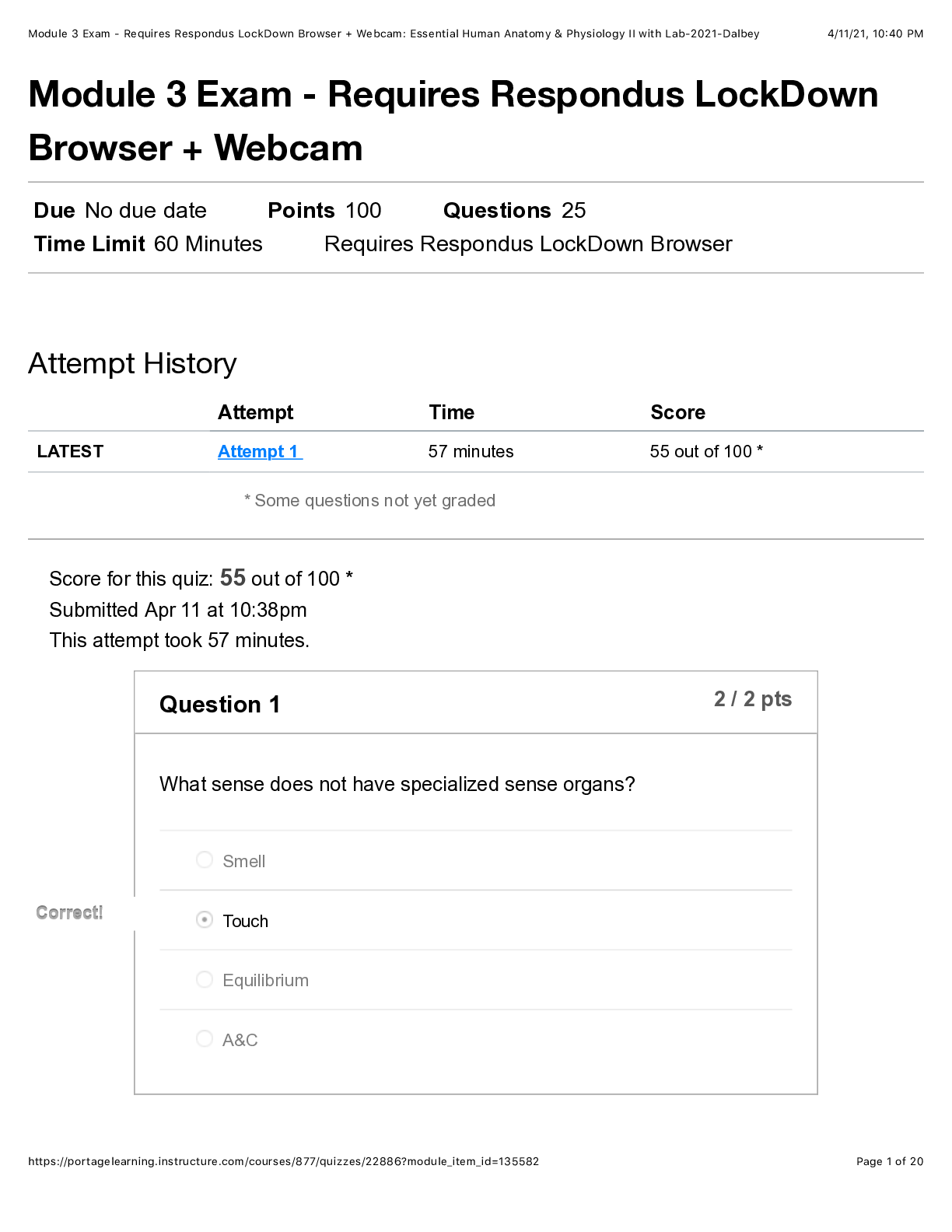
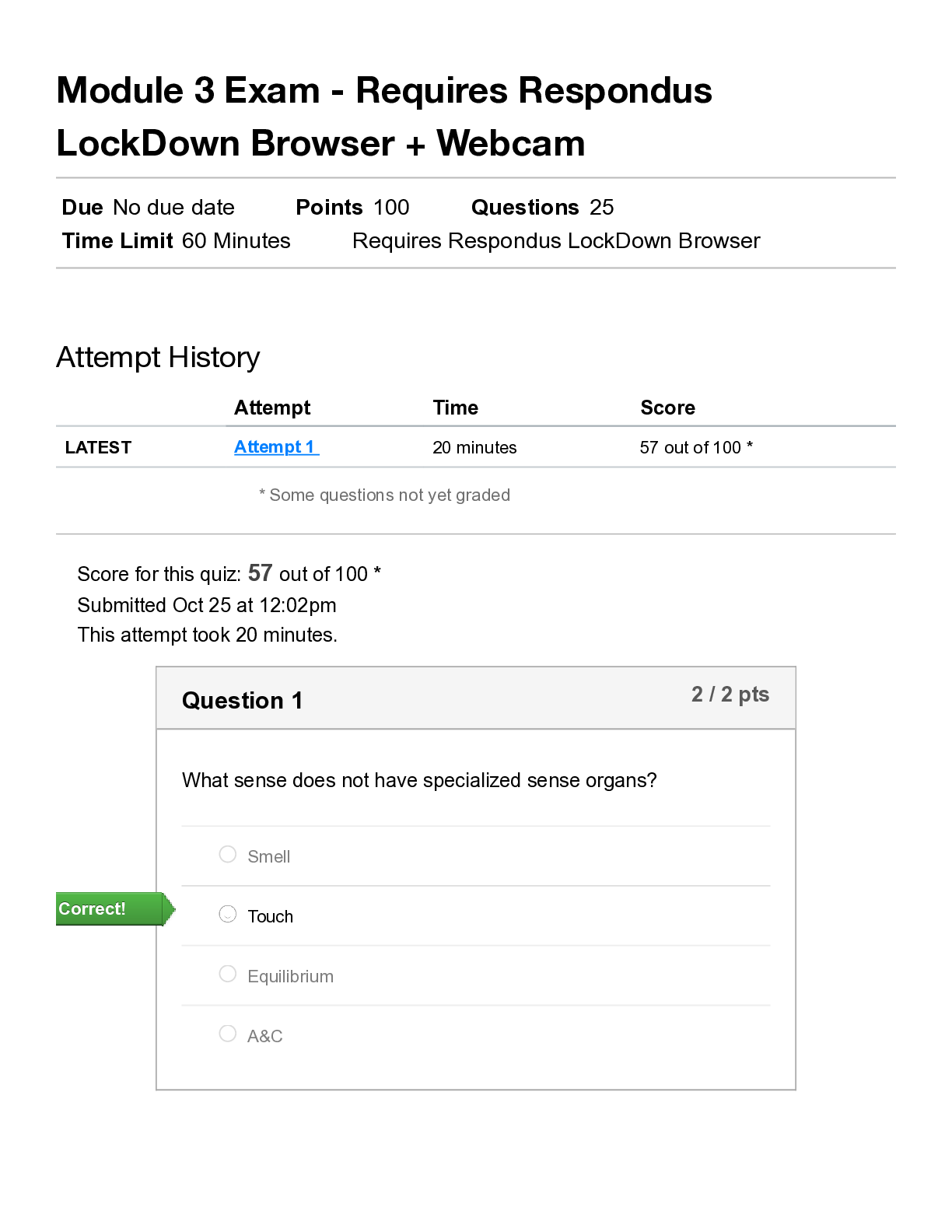
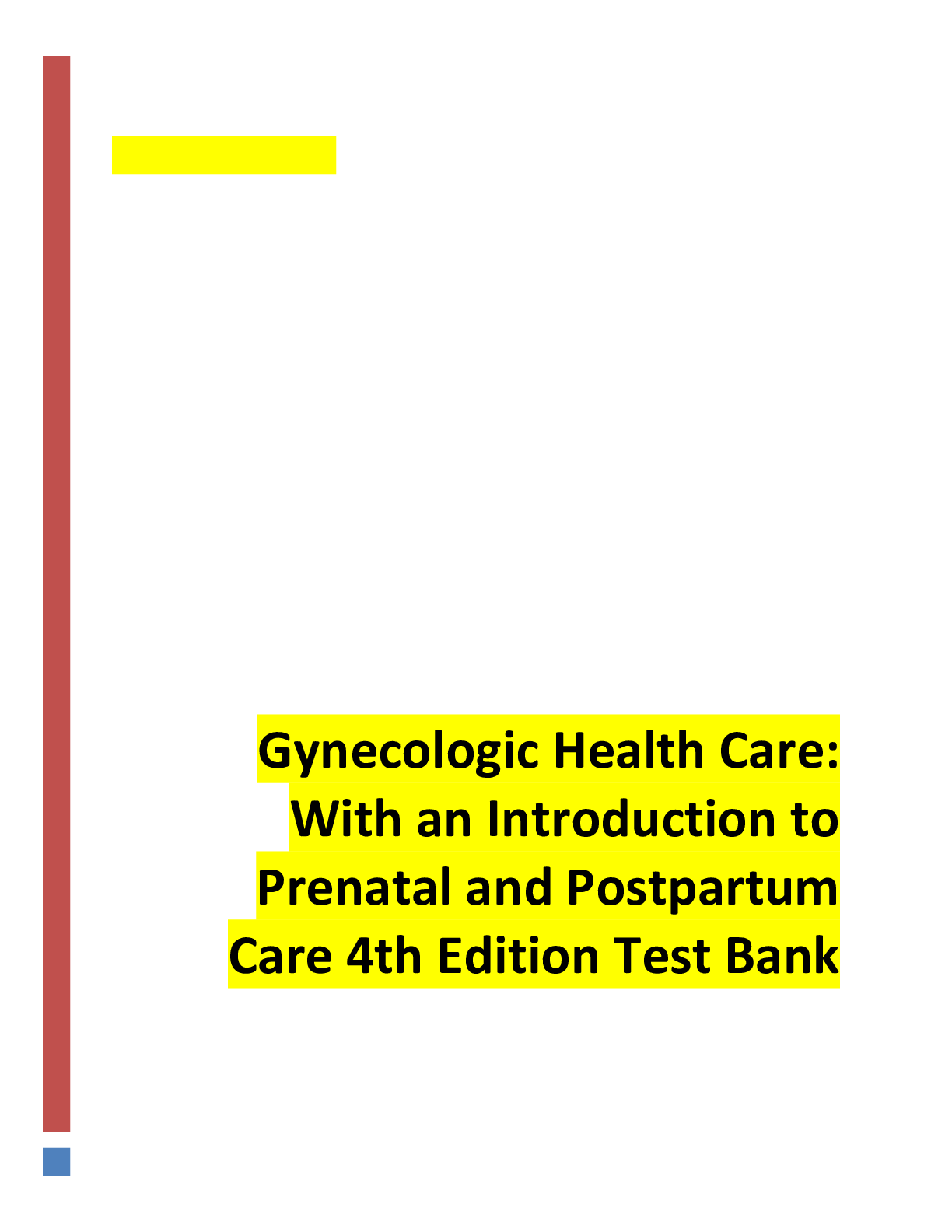
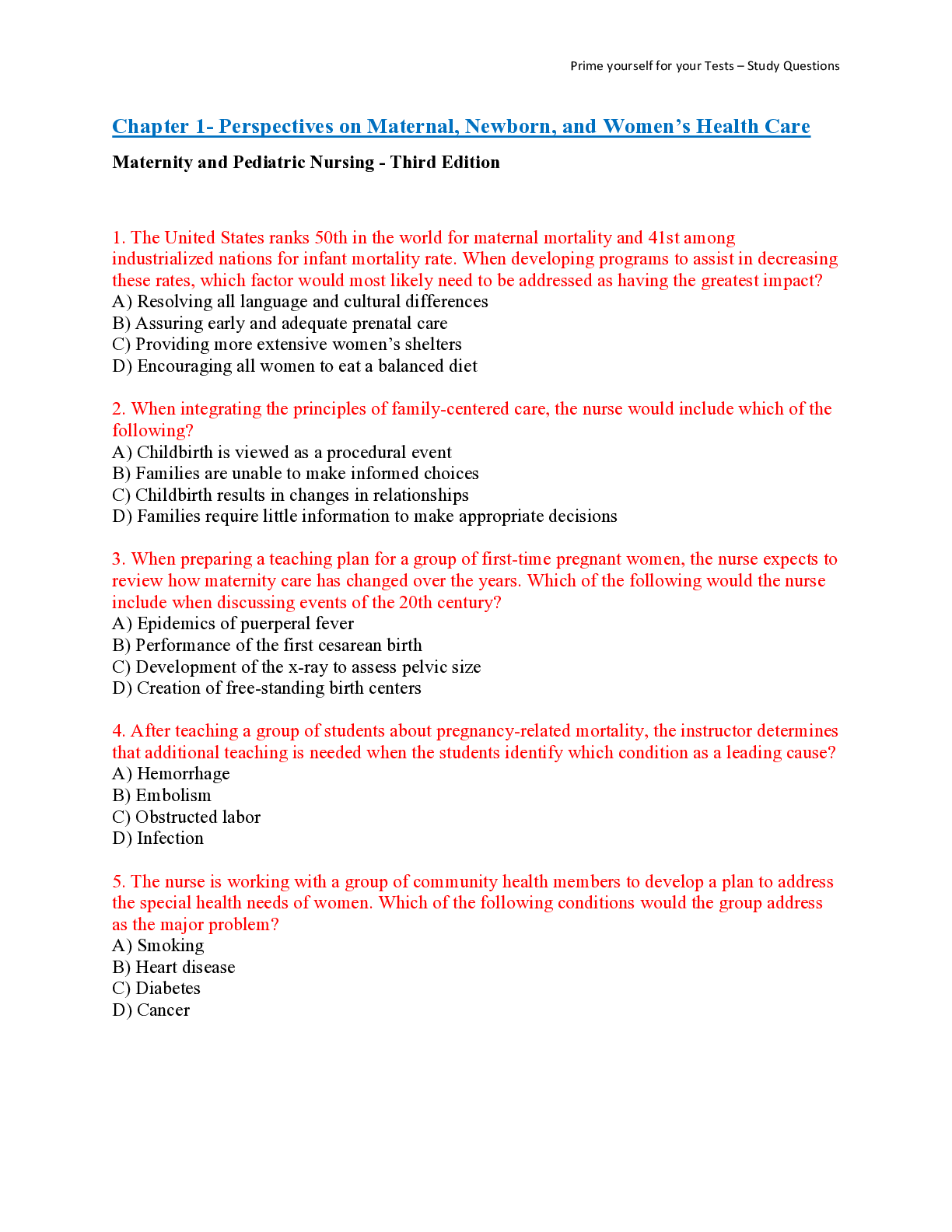


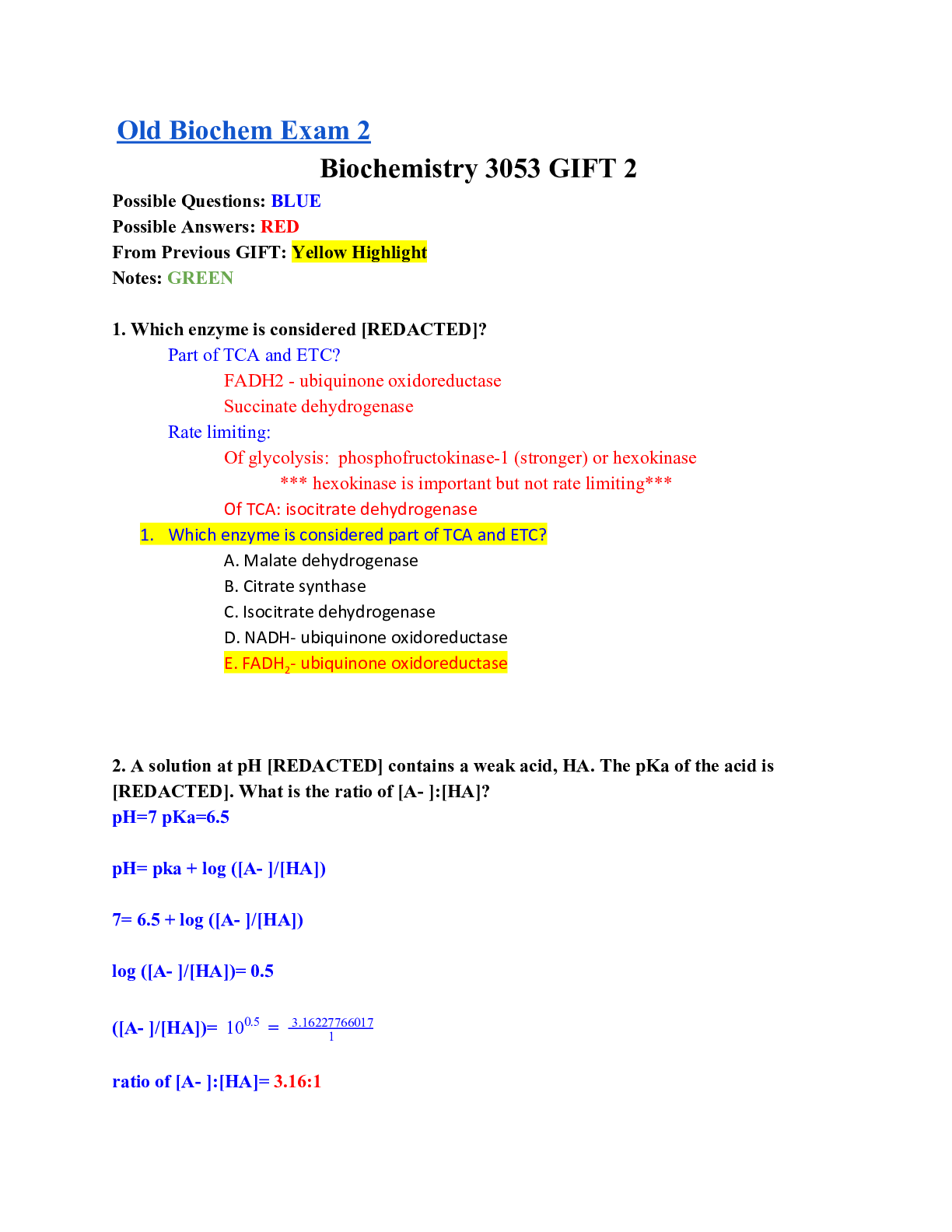
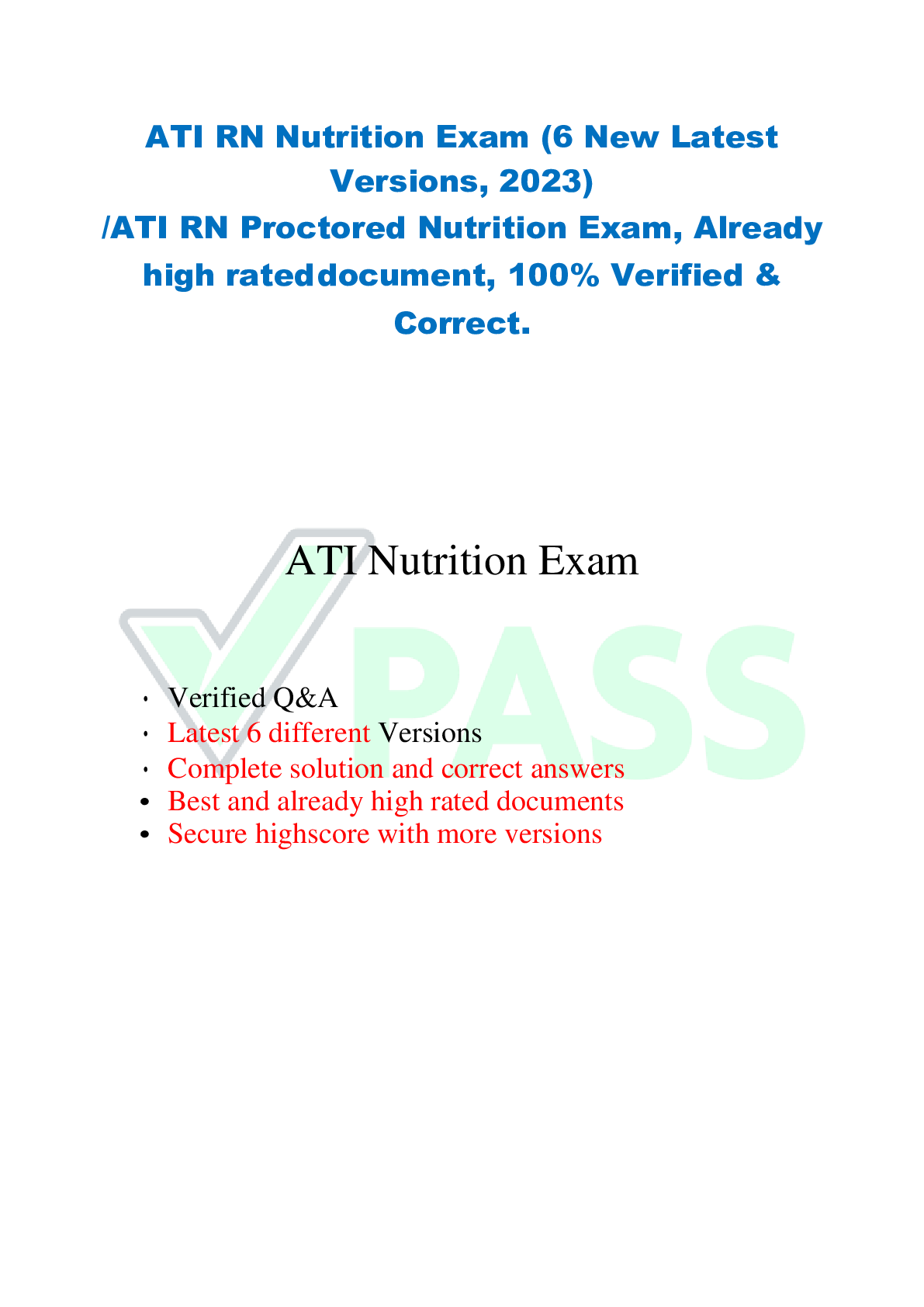


.png)
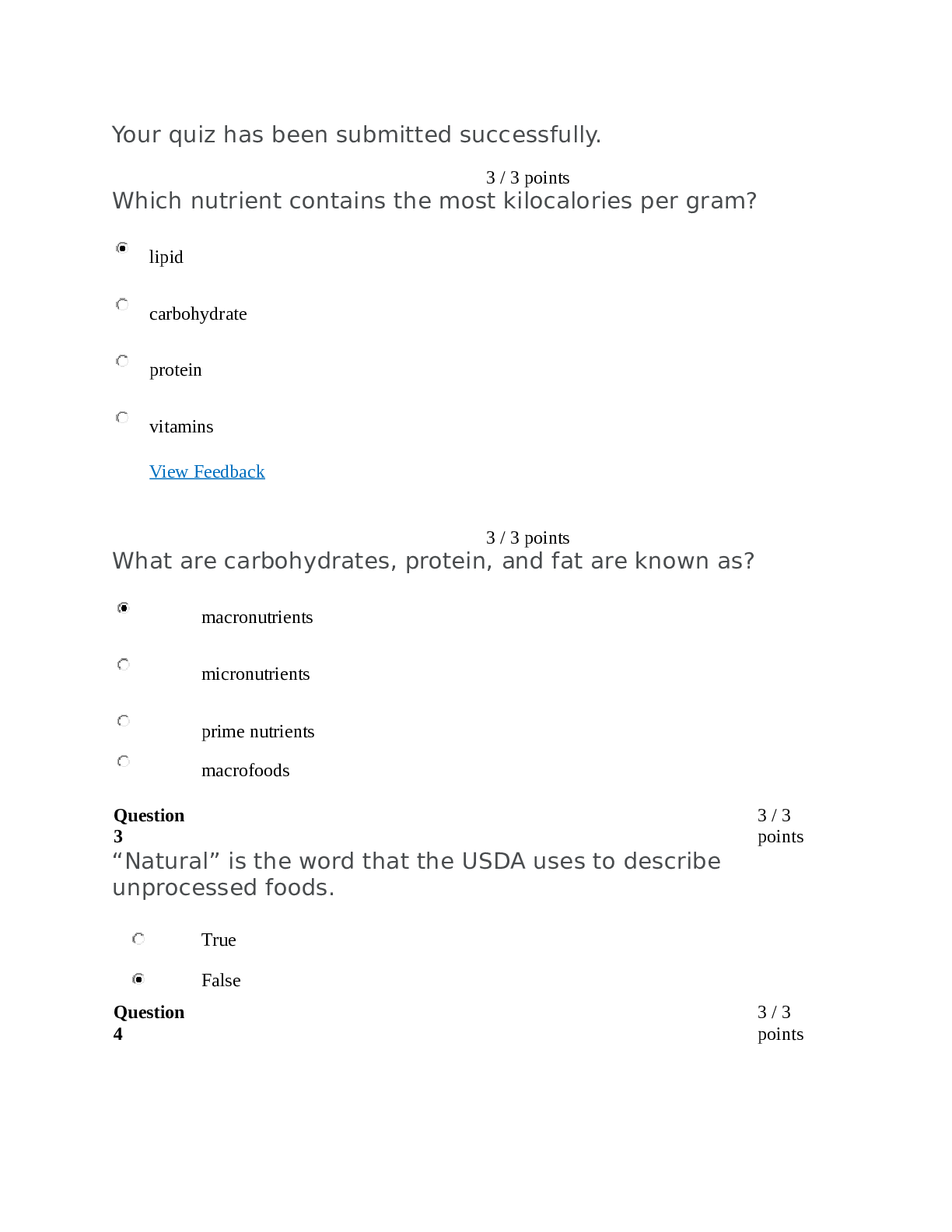
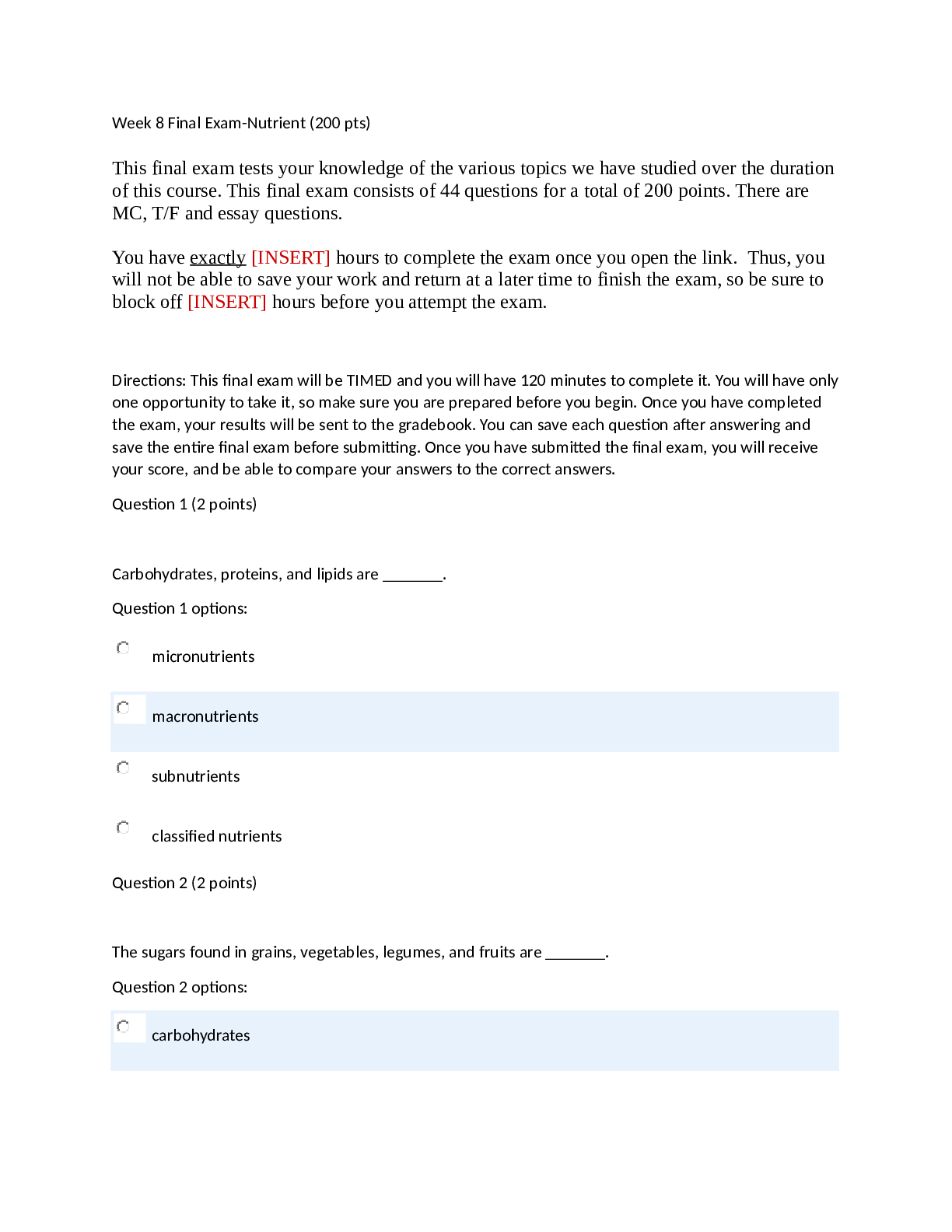
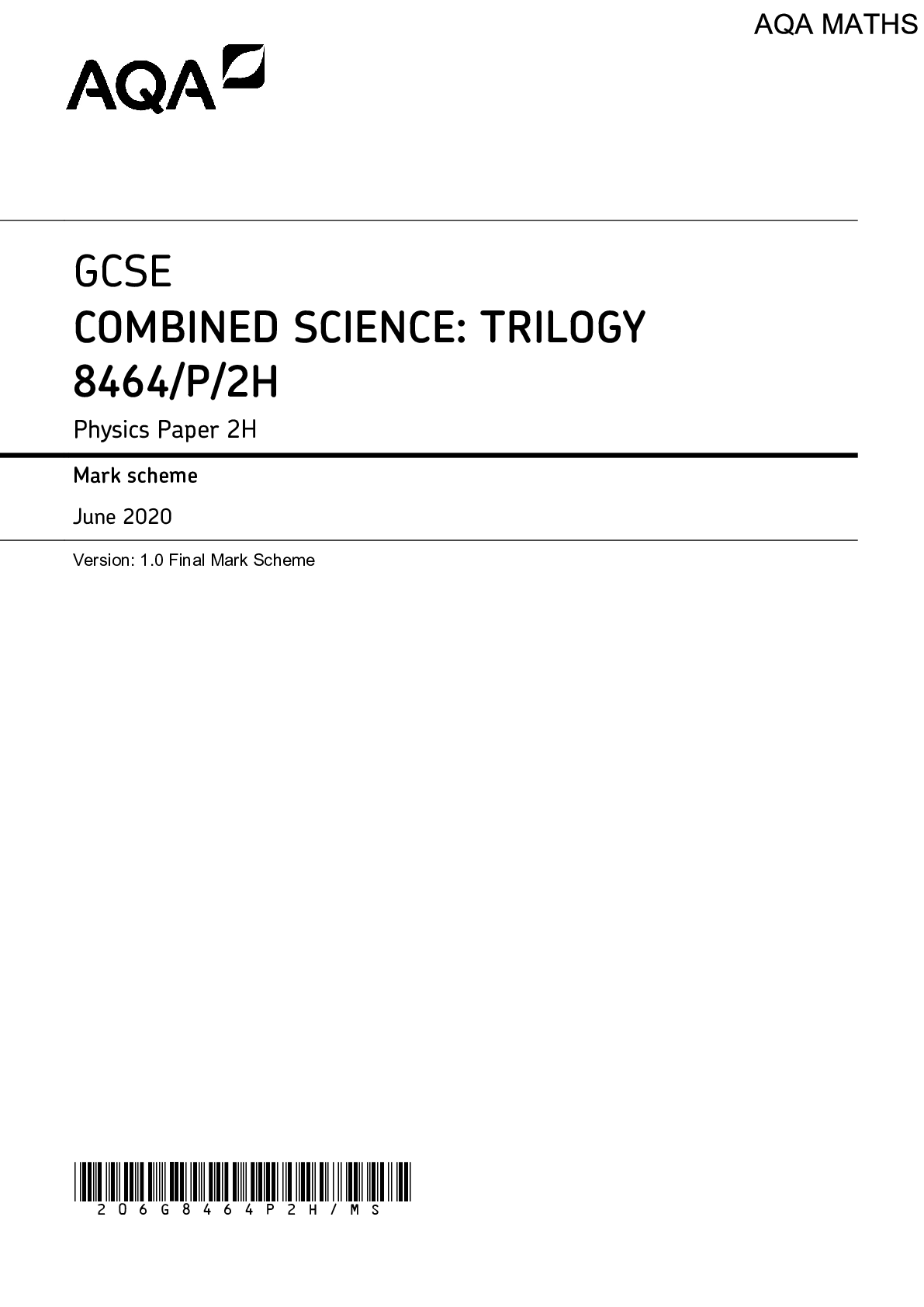



.png)

.png)

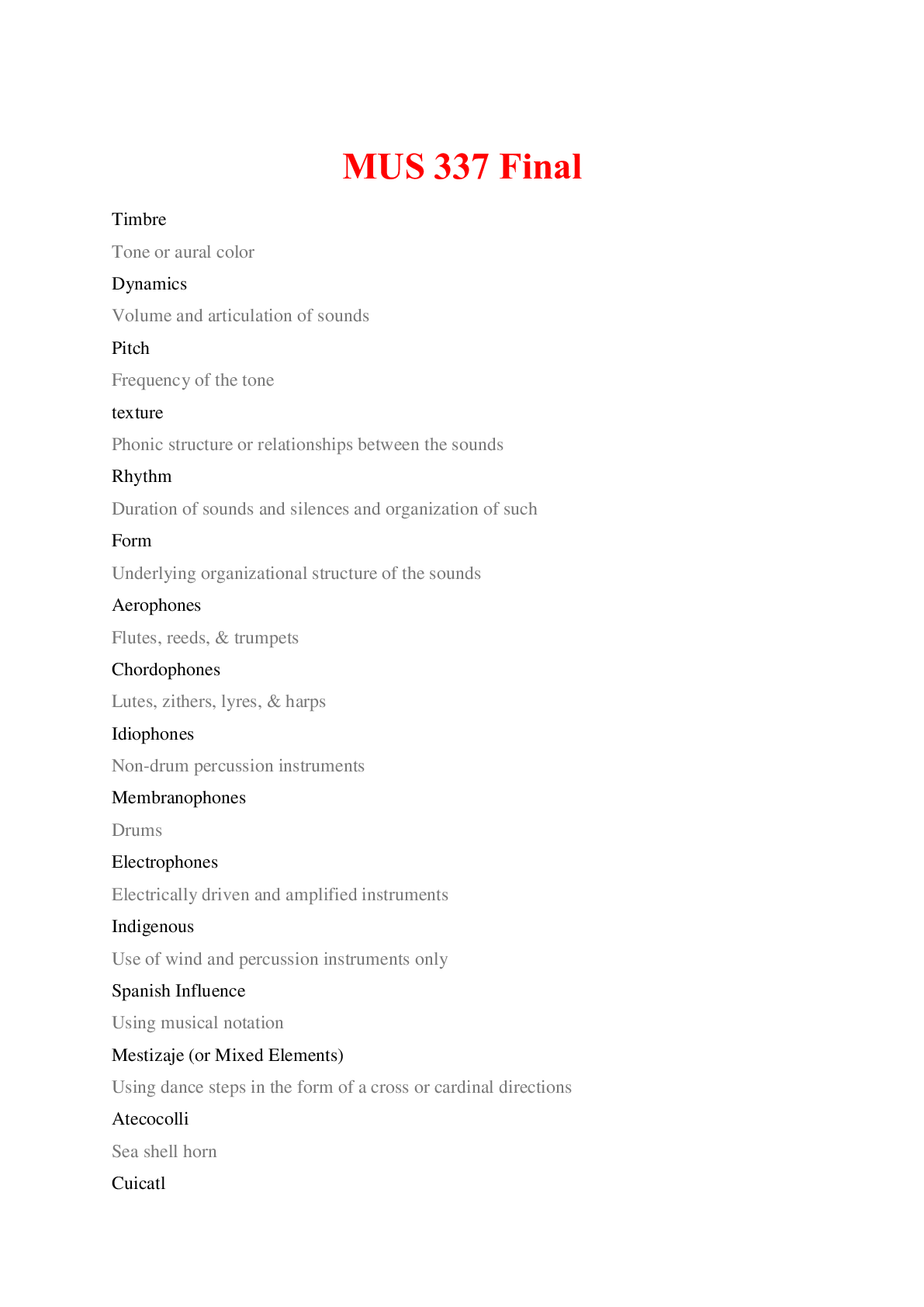

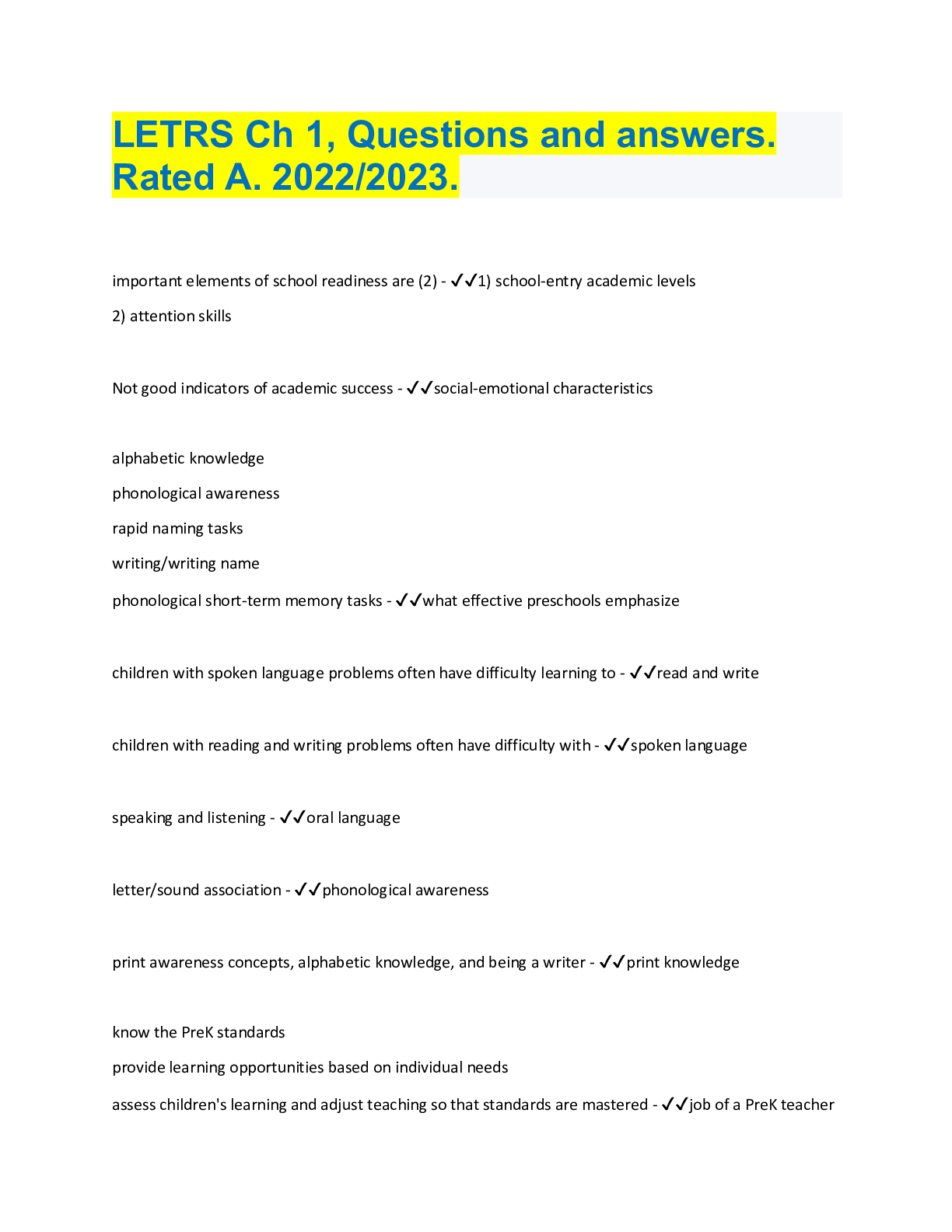
.png)
.png)

.png)
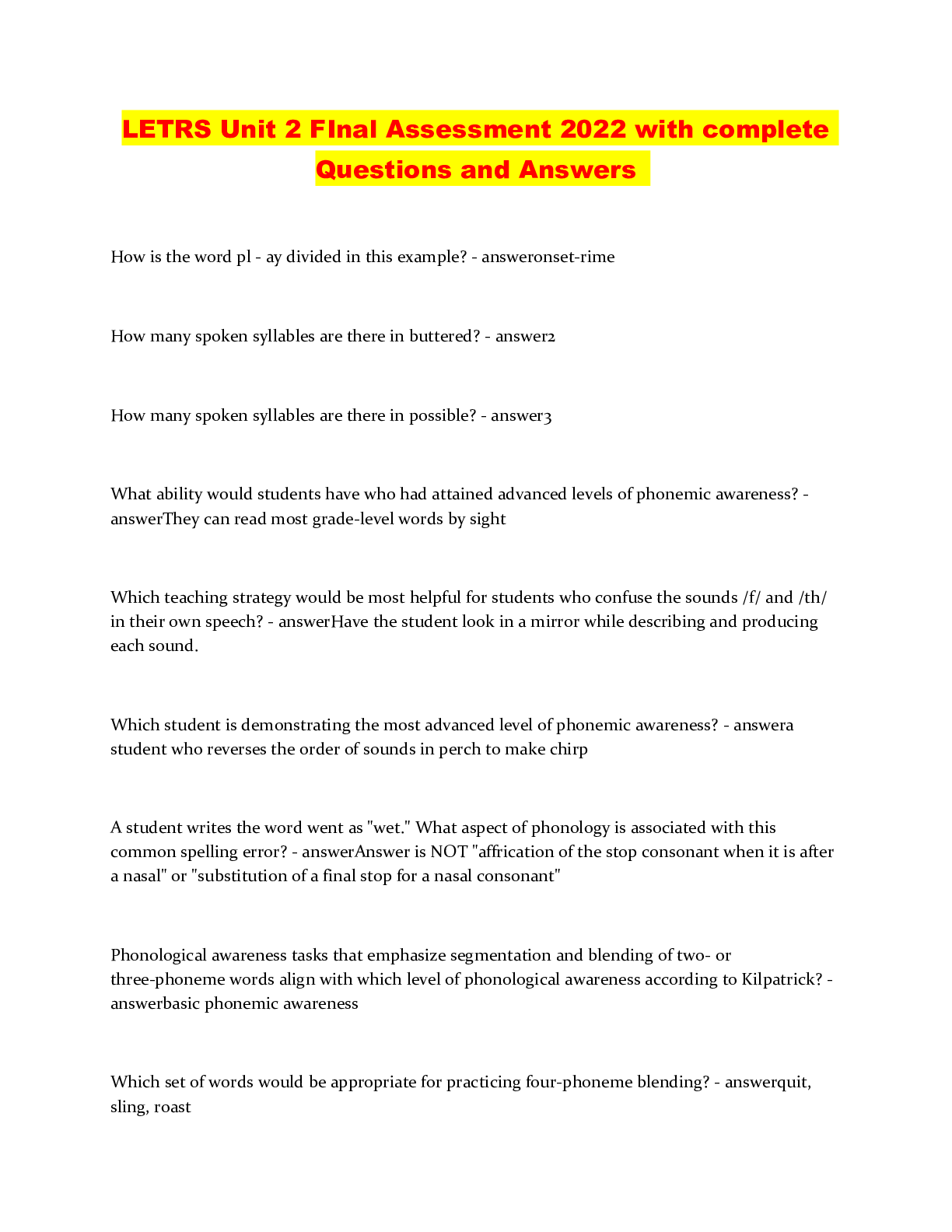



.png)
.png)

